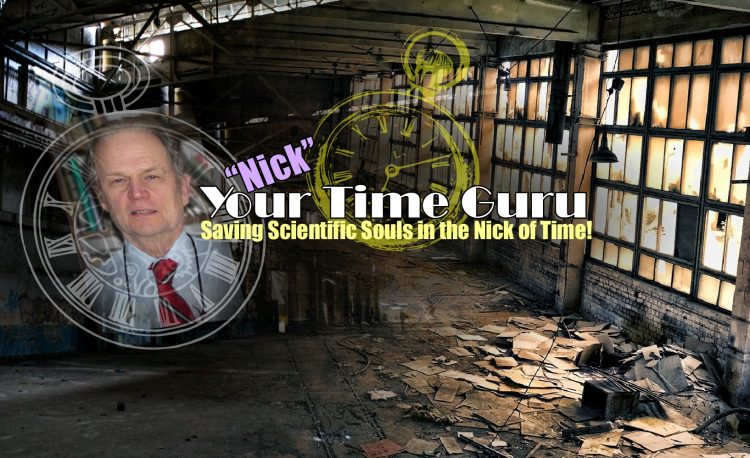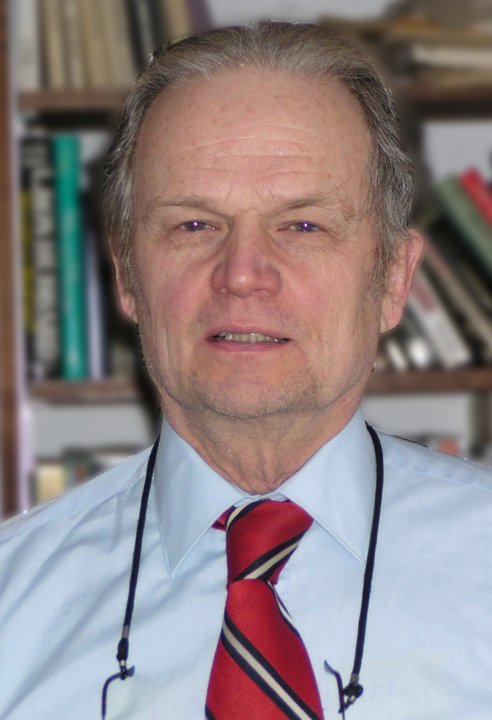1st Youthful Experience
In 1956, I entered the ninth grade. My math teacher, Mr. Nash, was an excellent and caring teacher. One day he wrote some things on the blackboard and then said something like, “We don’t know what the square root of minus one is.â€
Being a naïve kid, I misinterpreted this as meaning that the world doesn’t know what the square root of minus one is. This seemed like an interesting puzzle and since I liked puzzles, it piqued my interest. As it happened, we soon had a week’s vacation. While I liked math which is inherently abstract, I liked to think of math in terms of physical operations. So I thought of multiplying 3 x 2 as taking a measuring stick of length 3 and then laying 2 such sticks end to end to measure 6 units along a line. And a minus sign would just indicate a change to going in the opposite direction.
The problem was to find a number which when multiplied by itself would give -1 as that number would then be the square root of -1. But multiplying two positive numbers yielded a positive and multiplying two negative numbers yielded a positive. So there didn’t seem to be any way to multiply a number by itself and get -1.
I had a ruler and I visualized a line on the floor and a zero point on that line. And I wondered, “What physical operation could I do twice that would end up at -1?†At some point, I finally realized that one would have to go beyond the one dimensional line of real numbers and look at physical operations in two dimensions. I saw that if I took the ruler and turned it twice through 90o, it would end up at -1. So I worked out the basic arithmetic rules for two dimensional numbers which are more commonly known as complex numbers or imaginary numbers.
So this is a simple Eureka moment, when one sees that one can expand the domain of numbers from a single dimensional line to a two dimensional area. And once that basic idea is conceived, then one can go on to develop the details of, in this case, a new branch of mathematics..
Again, I was a very naïve kid so I had no idea that my insight was about 400 years too late. Well anyway, after vacation, I took all my papers showing all the rules and all my figuring into my math teacher to show him that I’d made a “world shaking discoveryâ€. I said to the teacher, “You said, “We don’t know what the square root of minus one is.†And I was about to continue and show him my great discovery, when he cut me off. He said, “No, I just meant that the class did not yet have that knowledge.†I felt crushed and I actually felt quite stupid at the time that I really thought that I’d made a world shaking discovery. So I just left without showing him my work.
An Aside – Life Is Probabilistic
As a quick aside, the above brings up a tangential point. First of all, if my math teacher had changed his original statement so that it was clearer what he meant, I would not have had that “Eureka†experience.
Similarly, if I had just launched into telling my teacher that I had worked out complex number theory on my own, that would have triggered other significant experiences. So just the slightest change in a sentence or even a misunderstanding of one word of what someone says can change one’s choice of study, which results in a change in what company or organization one goes to work for, which often means what city one lives in and, hence, who one meets, which determines one’s friends and one’s spouse and, hence, one’s kids. It’s hard to imagine a greater impact on one outside of having one’s DNA significantly altered and all those changes can be influenced by the smallest and most arbitrary of events.
Looking back over my teen and early twenty years, I note a number of such pivotal points where the most trivial of things, such as misunderstanding a word, causes the most dramatic change in the trajectory of one’s life. Being a physicist, I liken one’s life path to Quantum Mechanics’ view of the probabilistic path of an electron – for any individual electron, its path is highly unpredictable.
Second, later in life, that square root of -1 experience gave me great confidence in my ability to question established theory.
Another Quite Different Experience
Well, I was still a very naïve kid when I entered Harvard at 17. Regarding physics, I had one key assumption, namely, that everything my physics teachers would tell me would be true – I assumed their ideas would have been developed carefully using infallible math and logic and proven over and over again by experiment and verified by the smartest minds on earth.
Further, when I was taught Special Relativity, there was no mention that anyone had ever questioned the validity of special relativity – no one even mentioned the famous Twin Paradox which is at the heart of special relativity. So I just learned all the equations and worked out the numeric answers for all the problems.
My “revelation about special relativity†did not come about as part of my formal education. During my senior year, Life magazine had an article about our astronauts as this was just a couple of years after JFK had announced our mission to land a man on the moon. In the Life magazine article, it said that if an astronaut took off from earth in a spaceship and traveled at relativistic speeds, then upon the astronaut’s return to the earth, special relativity predicted that he would have aged less than those on earth. Basically, the Life magazine article had described a Twin Paradox scenario without mentioning any of the paradoxical issues. I thought this was a very ignorant interpretation of special relativity and figured the writer must be science illiterate. That was because special relativity’s time dilation is a function of relative velocity and the relative velocity between A and B is the same as the relative velocity between B and A. So special relativity’s time dilation cannot claim that B’s clock is slower than A’s clock as then, to be consistent, special relativity would have to conclude that A’s clock was also slower than B’s clock and that’s not just counterintuitive, it’s counter logical. So whenever my physics professor or physics textbook explicitly or implicitly interpreted special relativity’s time dilation as causing an actual, physical difference in clock rate, I knew that would lead to a contradiction, so I just automatically assumed they meant a “just observed†change in clock rate as that was the only thing that would make sense..
Well, I went to my professor and showed him the Life article and urged him to write a letter to the editor correcting such nonsense from this science illiterate author.
However, he replied that the article was correctly telling what special relativity claimed. I’m sure my jaw dropped in stunned surprise. I discussed why this was a completely illogical interpretation of special relativity and we went to the blackboard and had a back and forth discussion for quite some time. I remember thinking that the prof finally conceded it was illogical, but obviously once again I must have misunderstood my teacher and once again that had a profound effect on my life.
To make a long story short and to keep it relevant, there are two basic ways to interpret special relativity, namely:
- special relativity just describes what an observer observes and, in general, those observations do NOT describe what’s happening physically – just like optics predicts that when two twins start together and then begin to separate, both twins will OBSAERVE the other as shrinking, just as optics correctly predicts, BUT neither twin is actually shrinking.
- special relativity directly describes what’s happening physically
These two interpretations are mutually exclusive and, by definition, contradictory. Yet, physics academia accepts both unquestioningly.
Many students, who had the same assumption that I did about their always being taught “The Truth†and who, perhaps, listened to the prof more intently than I did, heard both interpretations enumerated above and internalized them and such knowledge became a strongly held belief system for them with much inertia.
My seeing that the Twin Paradox claim revealed a fatal flaw in the 2nd interpretation of special relativity required NO Eureka moment. I simply rejected, quite unconsciously, the obvious, namely, equations that are a function of the relative velocity between A and B must be interpreted as describing symmetric effects for A and B and that interpreting them as 2) above leads to an immediate and obvious contradiction. In fact, Prof. Herbert Dingle, who was one of the most distinguished relativists of his era, stated using interpretation 2) AND using special relativity with relative velocity “unavoidably requires that A works more slowly than B and B more slowly than A –which it requires no super-intelligence to see is impossibleâ€.
Hence, my seeing the flaw, that the Twin Paradox scenario leads to, requires no Eureka moment, it just requires that one has not yet developed a strongly held belief system to the contrary.
A Eureka moment often requires getting over the obstacle of a strongly held belief system that one has been taught and that is backed by all the authorities in that domain.
![]()




